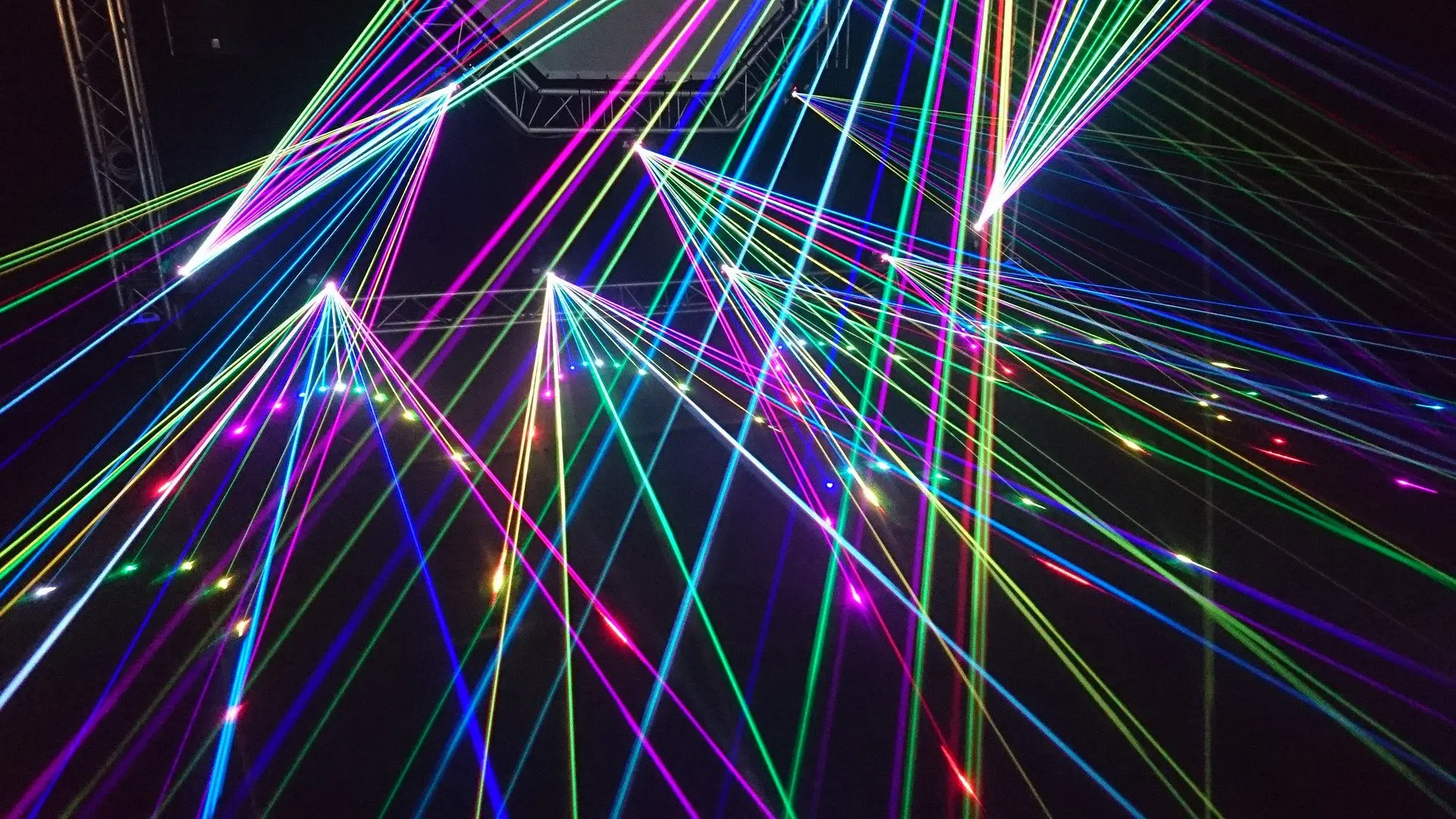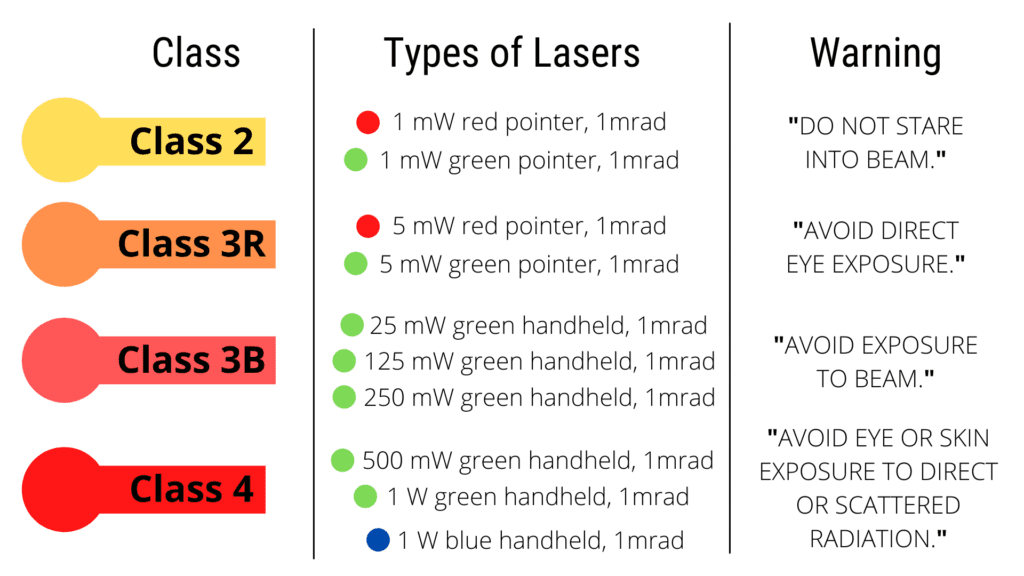What Are The Different Laser Classes?

Lasers are more prevalent in our everyday lives than ever before. The more normalized lasers are, the easier it is to forget how powerful they can be. How do you know when a laser is too powerful to be used casually? The answer is laser classes.
The FDA and Laser Safety Classification
The laser classification system was created in the early 1970’s and later accepted by the FDA. A key part of laser safety, the FDA’s laser safety classification system shows just how dangerous lasers can be and serves as a precedent for many regulations regarding the sale and possession of laser pointers. These classes categorize lasers by the level of damage they can inflict, ranging from low (Class 1) to severe (Class 4). A laser’s potential to do damage is mainly measured by its power in milliwatts in relation to wavelength and time exposed.
Laser Classification
Lasers, like other industrial tools, are classified according to their type. Type is defined by the lasing medium used – solid state, gas, excimer, dye, or semiconductor. Laser pointers are further defined by the duration of the laser emission – as a continuous wave or pulsed laser.
Depending on their power, wavelength, and pulse duration, lasers and laser pointers are then classified with respect to the hazard they pose to humans. Classes range from 1 to 4.
- Laser class 1, class 2 and class 3 can produce no more than 5 milliwatts of power yet produce a comfortable visible region for the human eye.
- For visible light lasers, a class 3 laser or 3A laser is the maximum permitted in the USA and Canada.
- Most laser pointers on the market are class 3. Class 3 laser pointers can also be referred to as class 3R or 3A.
Before purchasing a laser pointer, confirm that the class is clearly indicated on the laser’s housing as required by law.
How do Laser Classifications Differ?
Class 2 Lasers
A Class 2 laser is a safe laser as long as the eye is not exposed to the laser for longer than .25 seconds. Often the eye will blink prior to the .25 second limit as a natural defense. But, as a safety precaution Class 2 lasers must include a label warning communicating something along the lines of “Do not stare into beam.” Similar to Class 1, Class 2 also has a subclass called Class 2M which labels a laser safe with the .25 second limit excepted when passed through a magnifying lens.
Class 3R/3A Lasers
For a laser to be considered a Class 3R laser it must be under 5 mW. These lasers are considered safe if beam viewing is restricted. Making eye contact with the beam puts users at a low risk of injury. Class 3 lasers must include a label warning communicating something along the lines of “Avoid direct eye exposure.”
Class 3B Lasers
When in the presence of a Class 3B laser the potential for serious injury reaches a medium/high level. It’s very common for protective glasses to be worn when using Class 3B lasers and are required to include a warning label reading “Avoid exposure to beam.” You may be surprised to learn that, while they are the second most powerful, Class 3B lasers are used to read CDs and DVDs.
Class 4 Lasers
Class 4 lasers are the most powerful lasers with the highest potential to cause severe harm to humans. Unlike the other laser classes which only deem a laser beam dangerous if directly viewed, a Class 4 laser can cause severe damage even if indirectly viewed. They have the ability to burn skin if exposed and present a fire risk. Laser safety is of utmost importance when handling Class 4 lasers.

Alpec’s Laser Pointers are Extremely Safe
Avoid eye damage from any laser by using laser pointers with 100% IR filtration. Alpec laser pointers provide 100% IR filtration, and have approvals from the FDA and the Center for Devices and Radiological Health (CDRH). Our laser pointers are safe to use for presentations and pointing.
For additional safety suggestions on how to use lasers safely, please review our suggestions for using laser pointers safely.
Happy (Safe) Pointing!
This article originally posted on February 9, 2021
